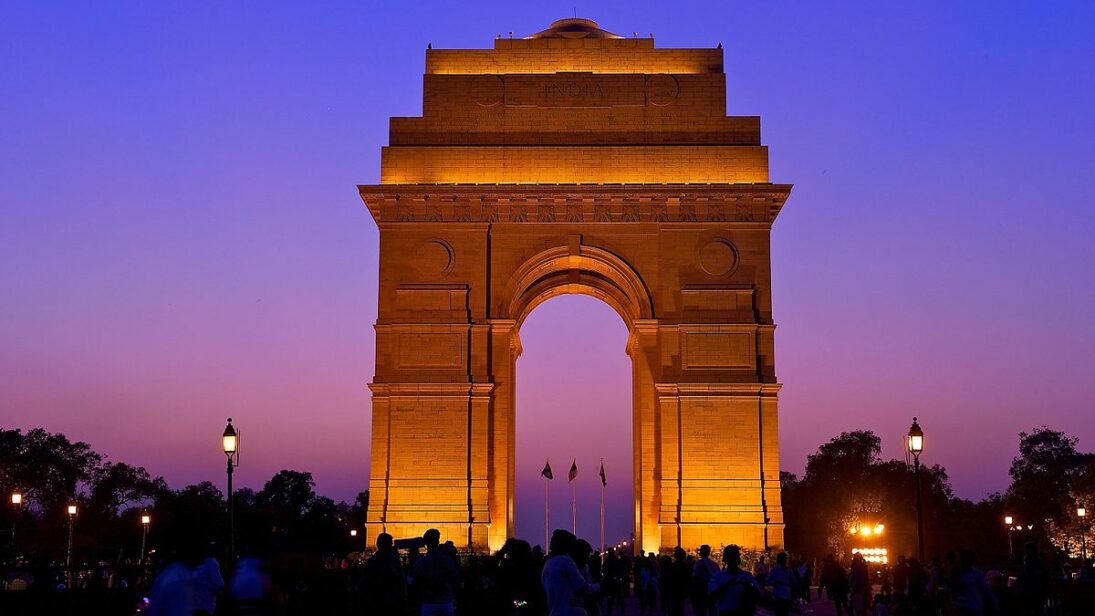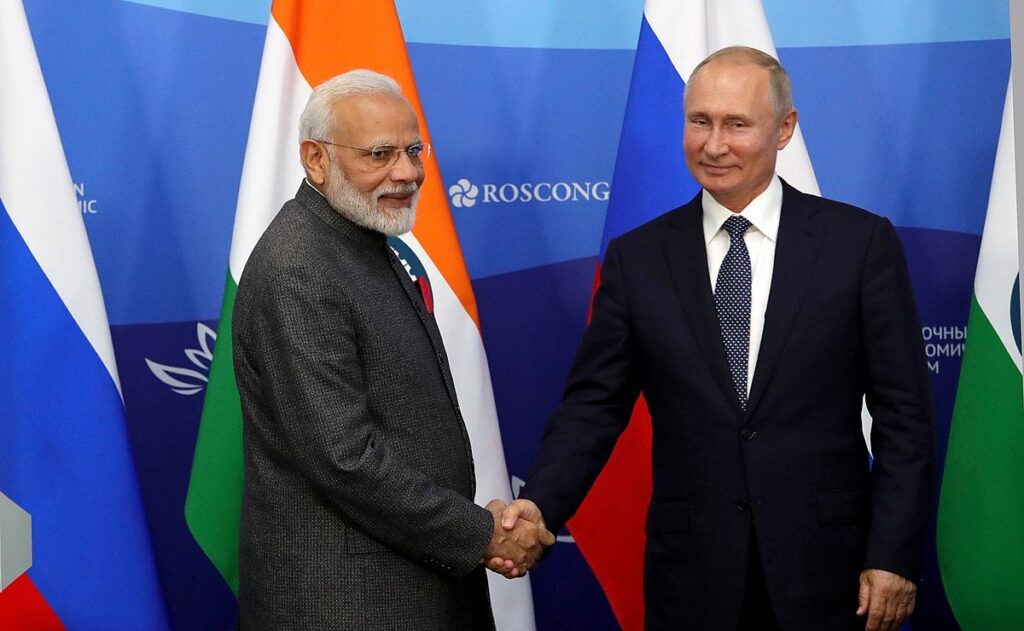
The story of India’s rising diplomatic clout is best defined as a paradox. On the one hand, India’s importance in world politics, due to its economic potential and strategic value, is at its zenith. On the other hand, it is behind smaller countries such as Turkiye, Brazil, and Italy in terms of the size of its diplomatic network. The Global Diplomacy Index, prepared by the Lowy Institute, ranks countries based on the number of their diplomatic posts across the globe. China (274), the United States of America (271), and Turkiye (252) hold the top positions in the index. Whereas India sits at the 11th position with only 194 diplomatic posts. In recent years, India has made significant strides in increasing the size of its diplomatic corps from 173 in 2016 to 194 in 2023. However, this increase is neither proportionate to India’s size (in terms of economy, population, military and culture) nor does it meet its global ambitions as an aspiring leading power. This disparity affects India’s ability to influence countries to resolve the essential concerns of its expatriates as well as restricts its strategic space to secure its interests abroad. Resolving this shortage of qualified diplomatic staff and adequate diplomatic missions is a critical need to realize India’s vision of being a global superpower.
Role of Indian Embassies: A Demand Surplus
The United Nations’ World Migration Report 2024 states that India has the highest number of expatriates in the world (nearly 18 million) and the second-highest number of overseas students (508,000). It also receives the highest remittances (USD $111 billion) from both skilled and semi-skilled workers. Such a large presence overseas naturally generates diverse concerns for expatriates such as employment-related issues, non-renewal of work visas, unauthorized retention of passports by employers, and student matters, which require support from Indian missions abroad. To address these concerns, Indian embassies require more diplomatic staff with in-country networks and an advanced understanding of local laws and public diplomacy to effectively help expatriates. If Indian missions were adequately staffed, diplomats could also engage with the government and business community to improve economic relations and cultural ties as well as utilize India’s leverage to ease visa restrictions for its citizens.
Not only does India have fewer diplomatic posts than countries of comparable size and ambition, but the total strength of its staff globally as of December 2023 is only 4888. This is significantly lower than that of the United States (30,000) and China (8,000). As the Parliamentary Committee on External Affairs noted in 2023, “India’s Diplomatic Service is perhaps the most short-staffed in comparison to many other countries whose economy and stature is much leaner than that of ours.” Despite plans to augment staff by 200 over the next five years, the laggard pace of this much-needed reform cannot catch up with India’s increasing engagement at the global level, be it with countries or international organizations. Recent solutions are attempting to correct years of insufficient hiring (only 30-40 officers annually), partly hobbled by the unwillingness of aspirants to join the Indian Foreign Service (IFS) in recent decades. Once hired, the diplomats’ training also suffers because the IFS is allocated a meager budget ($2.5 million in 2023) to prepare diplomats for service. One remedy that the government has been receptive towards is lateral entry of specialists into government departments and has hired several since 2018, including in the Ministry of External Affairs (MEA). But experts have raised concerns about the efficacy of such programs due to the specialists’ lack of on-the-ground experience in handling crucial foreign policy matters.
In recent years, India has made significant strides in increasing the size of its diplomatic corps from 173 in 2016 to 194 in 2023. However, this increase is neither proportionate to India’s size (in terms of economy, population, military and culture) nor does it meet its global ambitions as an aspiring leading power.
This limited number of diplomatic staff and lack of institutional resources reflect India’s incapacity to effectively deal with diplomatic issues at home and abroad. A small number of officers, particularly at the embassy level, is expected to maintain strategic connections, negotiate security, defense, technology, and business deals, and execute other foreign policy goals. Moreover, embassies play a major role in promoting India’s culture to bolster its soft power and tackling propaganda, which is invariably affected due to capacity issues as a result of less diplomatic presence in the host country.
Incapacity to Support Expatriates
It is Indian expatriates that have primarily borne the brunt of the IFS’ failure to fix its capacity issues. The MEA reported that between 2016 – 2021, 33,200 Indian workers died in the GCC countries (Bahrain, Kuwait, Oman, Saudi Arabia, United Arab Emirates, and Qatar). Migrant workers in these countries filed over 90,200 complaints to the MEA regarding labor exploitation and poor working conditions but their concerns were not resolved, likely due to a lack of adequate diplomatic staff able to lobby on their behalf. For instance, the highest number of deaths (14,229) and complaints (33,712) came from Saudi Arabia. However, only 46 staff are deployed in the Indian Embassy in Riyadh. Scholars have detailed how the shortfall of staff in Indian missions in the Gulf and their lack of technical skills and knowledge of local laws have impeded India’s ability to protect its diaspora there.
Similarly, in Cambodia over 5,000 Indians were trafficked recently on account of a fake job scam and forced to commit fraud. In response, the MEA issued various advisories to Indian citizens and job seekers against traveling to Laos and Cambodia and is coordinating with local authorities to bring the workers back. However, the challenge of such a mission is underscored by the fact that there are only 14 diplomatic staff members deployed in the Indian Embassy at Phnom Penh. This staff has the onerous responsibility of coordinating with all arms of the host government on every diplomatic issue, including the safe return of Indians. In this way, India’s understaffed missions can exacerbate the diplomatic challenges citizens face abroad.
Falling Short of India’s Goal of Global Leadership
India’s burgeoning presence internationally, through the opening up of new diplomatic missions across Africa (16 embassies), Latin America and the Caribbean (2 embassies), the Pacific Islands (1), and Europe (2 embassies), reflects its expanding global footprint. Despite this growth, however, there is no Indian diplomatic presence in 53 countries. Furthermore, many existing missions are understaffed and have access to limited budgets. This reality suggests that Indian diplomacy is still restricted to being regional rather than being truly global, which falls short of its ambition of being a vishwa guru (world teacher) or vishwa mitra (world’s friend).

Moreover, India’s unique strategic neutrality approach to foreign policy demands intricate maneuvering to maintain close ties with multiple major powers without being drawn to any side’s confrontations. This maneuvering is executed by skilled diplomats beyond India’s physical borders, reflecting the country’s ability to navigate changing geopolitical dynamics. New Delhi has so far adeptly balanced relations between its different partners during recent crises like the Russia-Ukraine war and the Israel-Hamas conflict. However, walking this delicate diplomatic tightrope is likely to become more challenging going forward as India faces increased pressure to adapt to an increasingly polarized world and secure its interests globally.
For instance, China’s increasing forays in Asia and Africa underscore the urgent need for India to improve its global network of diplomatic personnel to counterbalance Beijing’s rising influence. China has not only widened its diplomatic presence across continents but it has also tightened its grip over the politics of smaller countries through its investments as part of the Belt and Road Initiative, particularly in India’s neighborhood. While India’s recent moves to open new embassies in Africa and introduce defense attachés in strategic locations such as Djibouti and the Philippines are steps in the right direction, it still has a long way to go to catch up with China.
As former Indian foreign secretary Kanwal Sibal suggests: “India is currently in a ‘sweet spot’ but it cannot remain unaffected by global political, economic and security disruptions…It will have to ultimately rely on astute diplomacy and rapidly build internal strengths with aatmanirbharta to navigate the challenges ahead.” This astute diplomacy will inevitably require a diplomatic cohort steeped in local knowledge, which rests a lot on developing a larger on-the-ground presence and key relationships in the host country.
Reforming the Indian Foreign Service
Many of these issues emerge from the MEA’s overall budget, which for 2024-2025 is merely USD $2.5 billion (compared to USD $2.1 billion last year). This limited allocation impedes India’s ability to provide adequate financial aid to strategically important nations, enhance diplomatic training programs, and expand its global diplomatic footprint. Recognizing this shortfall, the PCEA, in its 2022 report, recommended that the MEA budget should be doubled to at least 1 percent from 0.4 percent of the overall budgetary allocation. Once this shortfall is addressed, the next step would be to increase the yearly intake of Grade A foreign service officers. India has limited resources and many competing priorities where these resources should be invested. However, if New Delhi’s aim is to be a global power, having a foreign service commensurate with its ambitions is a necessity and an increase in the MEA budget a requirement.
China’s increasing forays in Asia and Africa underscore the urgent need for India to improve its global network of diplomatic personnel to counterbalance Beijing’s rising influence.
Additionally, to enhance MEA’s capabilities, other posts can be accommodated either by lateral entry or direct recruitment drives based on experience and qualifications. The flexibility in employing these officers will allow the MEA to rope in experts in respective fields like law, business, and public outreach and improve the logistical constraints in the Indian missions abroad. The training for these lateral entrants and experts could focus on how to utilize their subject expertise in achieving India’s foreign policy objectives.
It is undeniable that India’s diplomatic efforts, both in terms of increasing its presence as well as achieving desirable outcomes, have seen remarkable growth over the past decade. However, an aspiring leading power like India has to utilize its resources effectively to punch above its weight in global politics. Having a well-staffed, skilled, and adequately trained foreign service is one step closer to that vision.
Also Read: Modi’s Visit to Russia Indicates a Reboot in the Bilateral Relationship.
***
Image 1: India Gate in Delhi via Flickr.
Image 2: Prime Minister Modi and President Putin via Wikimedia Commons.


